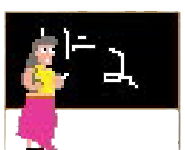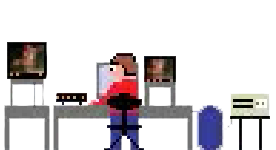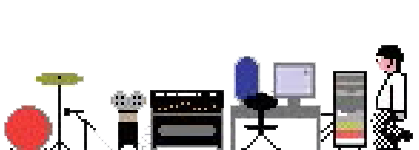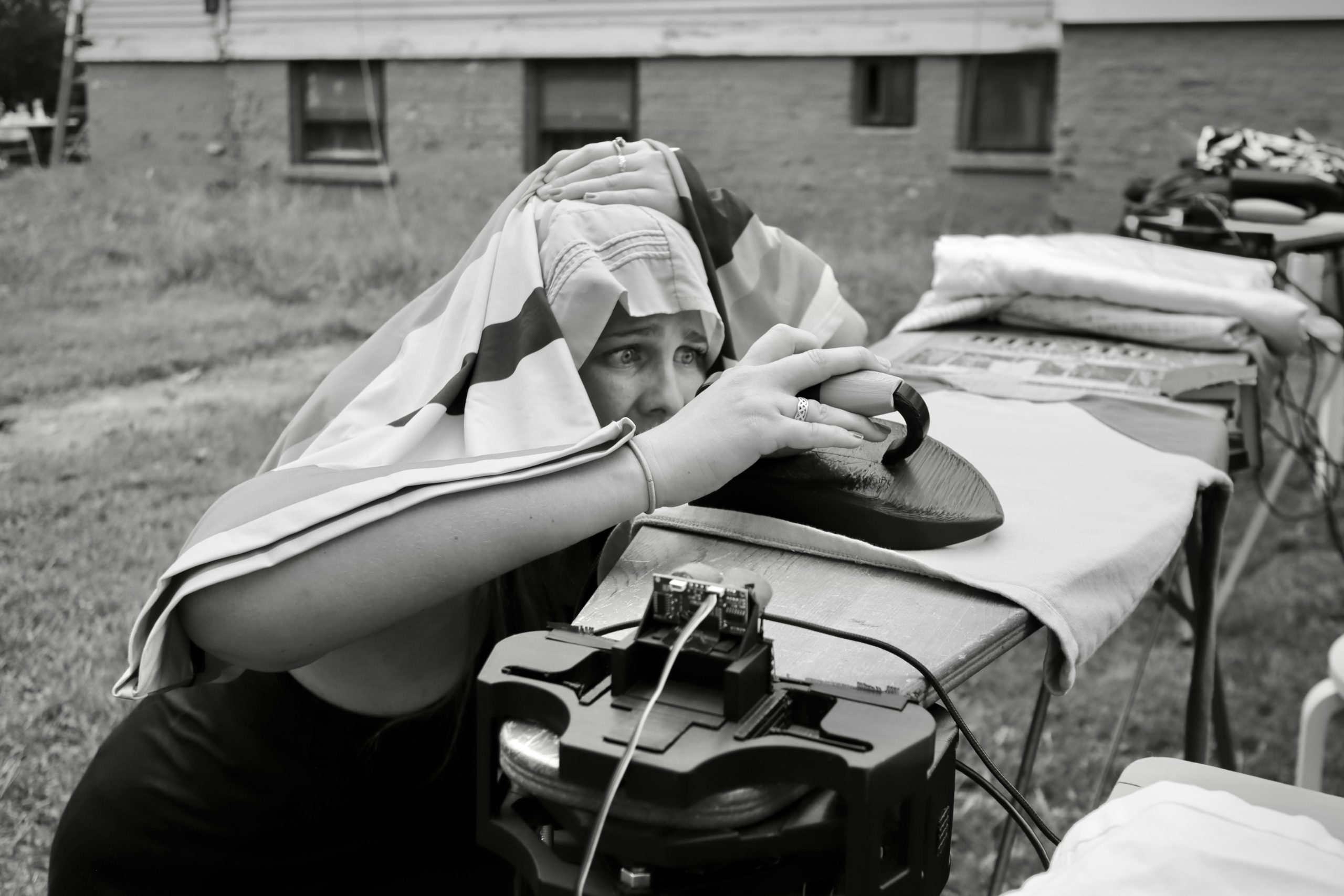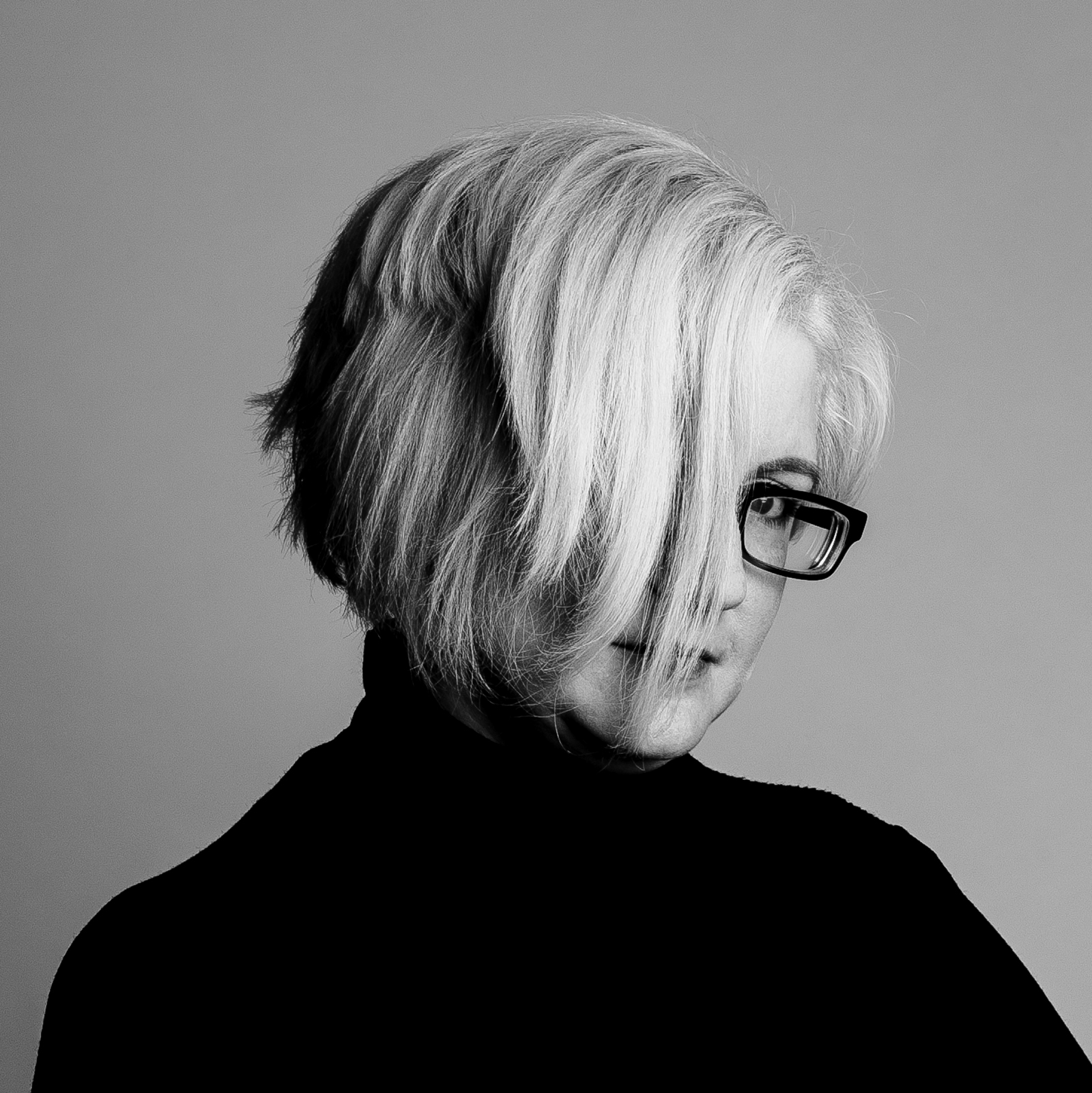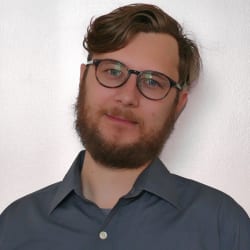Rheostat Rotary Rack is the second instrument of Women’s Labor, a feminist-activist project that repurposes domestic tools to become new musical instruments, to interrogate gender inequality in housework division. Itis based on a mid-20th century umbrella-style rotary dryer embedded with a rotary encoder and potentiometers, performed by hanging clothing on its strings, rotating it by hand or by wind.
Saturday August 19, 2023 OUTDOORS
1-4 pm
Location: Harvestworks Art and Technology Program Building 10a, Nolan Park, Governors Island
Women’s Labor is a feminist-activist project that repurposes domestic tools to become new musical instruments, integrating the massive but invisible gender inequality in housework division in the home. Using embedded technologies, these household-devices-turned instruments are explored in interactive installations, commissioned compositions by women, workshops, and performances.
While policies have made progress in tackling gender inequality in the workplace, such inequality stubbornly remain in the household: women globally spend disproportionately more time doing unpaid housework than men. According to the UN, the feminization of care and domestic work is a pressing worldwide social, cultural, and economic challenge that not only compromises women’s employment opportunities and ability to build assets for themselves; it also significantly impacts women’s health and education, and increases vulnerability to violence and exploitation. Traditionally relegated to the private sphere, Women’s Labor interrogates domesticity through public engagement and performative spectacle with these gendered tools that are visible — and now audible — symbols of domestic labor gender inequality.
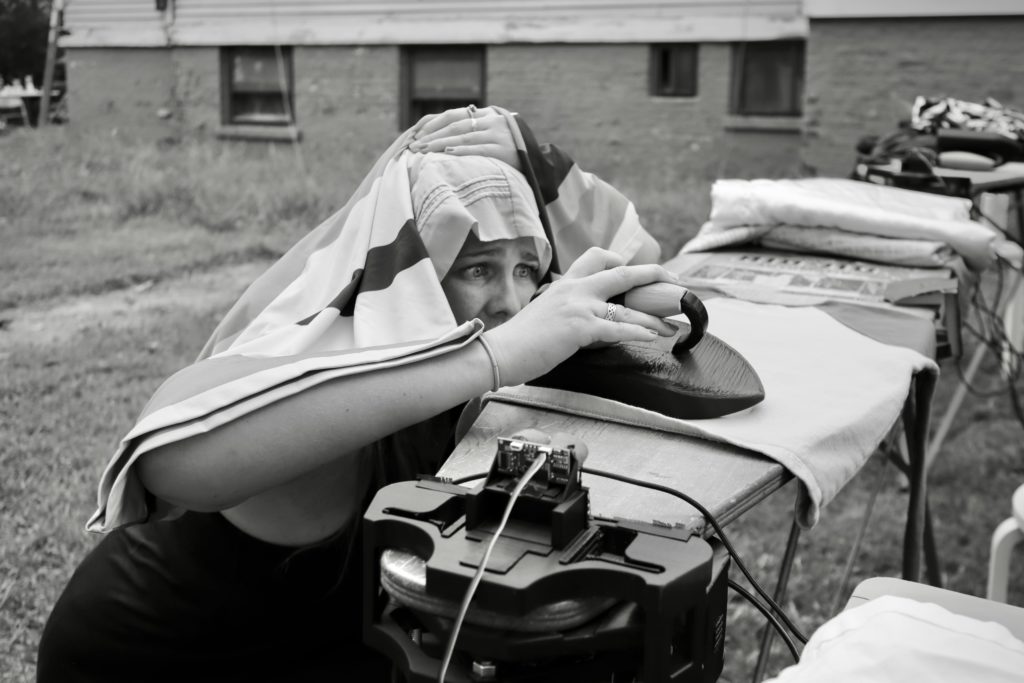
The first instrument that won the 2021 International Alliance of Women in Music Ruth Anderson Prize is the Embedded Iron, based on an early-20th century wooden ironing board and antique iron. Rheostat Rotary Rack, the second instrument,is based on the Australian “Hills Hoist” dryer, an outdoor steel rotary clothes line that can spin in the wind, designed to maximize wind drying. Embedded with a rotary encoder and potentiometers, it is performed by hanging clothing on its strings, rotating it by hand or by wind.
The audience is invited to participate by hanging their own clothing on the Rack, listening to the sounds of housework in a collective gender-equal houseworking performance. Rheostat Rotary Rack is both a human and post-human instrument, making for equal collaboration between humans and non-human agents in the Anthropocene.
Documentation of the instrument:
BIOS
Jocelyn Ho
Jocelyn Ho’s artistic practice involves exploring the relationship between sound, bodily gesture, and culture, as well as rethinking the classical music genre through multimedia technologies, inter-disciplinarity, and audience interactivity. She directs inter-disciplinary, collaborative performance projects, including the sold-out music-art-tech concert project Synaesthesia Playground in which she performed works created by fifteen composers, visual artists, technologists, and fashion designers in an interactive, multimedia piano recital. Her latest project Women’s Labor that interrogates domesticity through sound installation and performance has won the IAWM Ruth Anderson Prize, Hellman Fellowship, Harvestwork residency, and UCLA Hugo Davise Fund for Contemporary Music, and has been featured at Governors Island, New Music Gathering, Design Museum of Chicago, ISEA, NIME, Alliance of Women in Media Arts and Technology Conference, CCRMA at Stanford, and UCLA Art|Sci Gallery.
As pianist and composer, Ho is a Steinway Artist. She has performed and had her works premiered at Radio France, the Sydney Opera House, Berlin’s Radialsystem V, the Melbourne Recital Centre, New York Symphony Space, Spectrum NYC, Cold Spring Harbor Laboratory, Spotify’s NYC Headquarters, NSW Parliament House, Victorian Governor’s House, the Boston Isabella Gardner Museum, NYC Electroacoustic Music Festival.
She is an Assistant Professor of Performance Studies at UCLA.
Margaret Schedel
With an interdisciplinary career blending classical training in cello and composition, sound/audio data research, and innovative computational arts education, Margaret Anne Schedel transcends the boundaries of disparate fields to produce integrated work at the nexus of computation and the arts. Her diverse creative output spans the interactive multimedia operas, virtual reality experiences, sound art, video game scores, and compositions for a wide variety of classical instruments or custom controllers with interactive audio and video processing. A Professor in the Department of Music, at Stony Brook University she currently serves as the Chair of the Art Department and teaches computer music at Peabody Conservatory.
Bryan Jacobs
Composer, performer, and sound artist, Bryan Jacobs’ work focuses on interactions between live performers, mechanical instruments and computers. His pieces are often theatrical in nature, pitting blabber-mouthed fanciful showoffs against timid reluctants. The sounds are playfully organized and many times mimic patterns found in human dialogue. Hand-build electromechanical instruments controlled by microcontrollers bridge acoustic and electroacoustic sound worlds. These instruments live dual lives as time-based concert works and non-time-based gallery works.
ADDITIONAL MATERIAL
Embedded Iron, first instrument of Women’s Labor:
PRESS QUOTES
“Ho’s work brings attention to how our bodies interact with music, sound, and each other. And her mission isn’t over yet.” – Entropy Magazine
WEBSITE AND SOCIAL MEDIA LINKS
https://www.facebook.com/piano.jocelynho/
http://www.bryanjacobsmusic.com
COLLABORATORS
Jocelyn Ho, Creative director
Margaret Schedel, Technical director
Bryan Jacobs, Engineer


